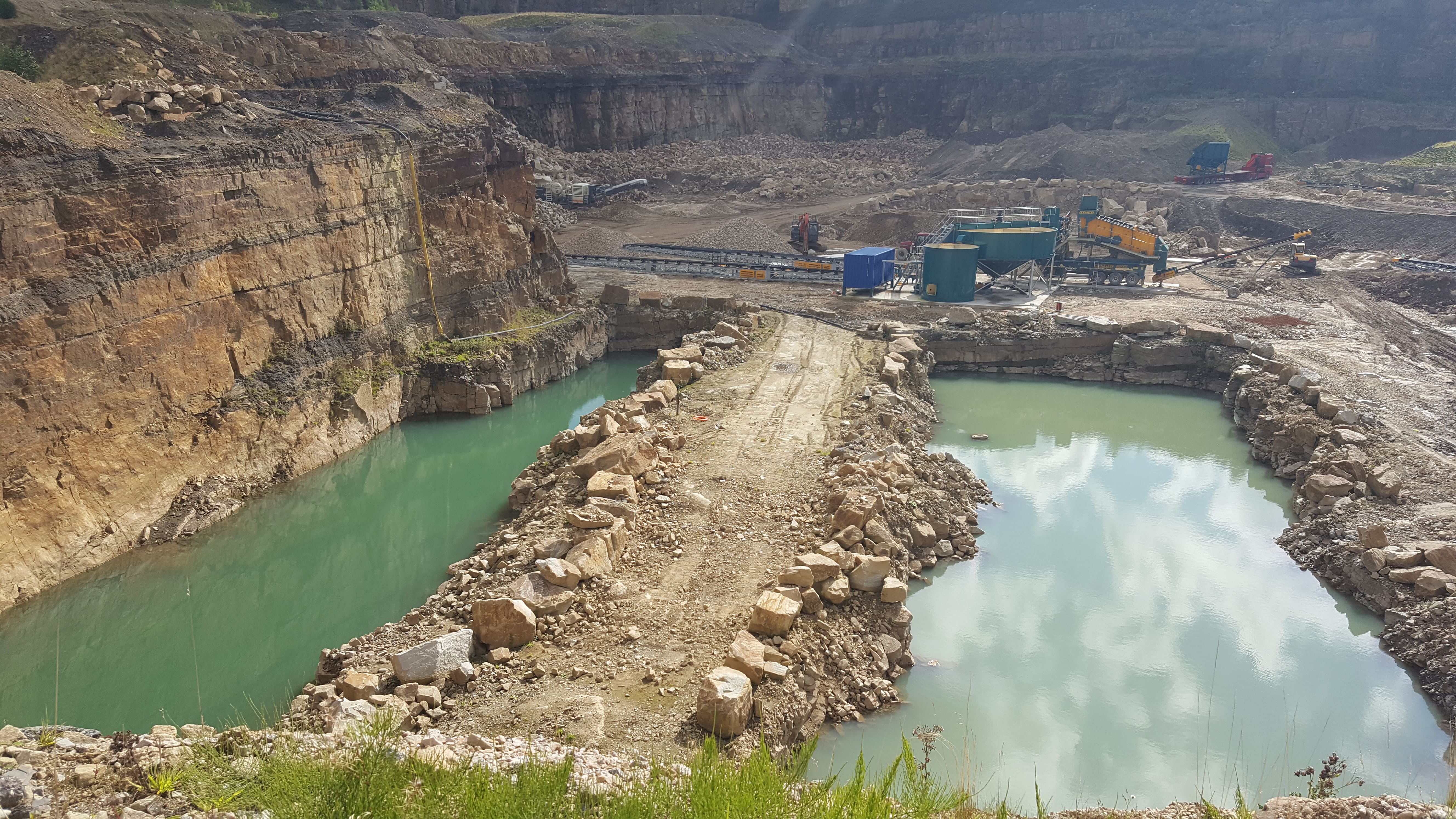What is Quarrying? An Essential Guide

At Armstrongs, we take pride in being a trusted supplier of high-quality quarry aggregates that form the foundation of construction and infrastructure projects.
Quarrying is a critical industry that helps provide essential materials like sand, gravel, and stone for building homes, roads, and public infrastructure.
Understanding what is quarrying and how it supports construction is key to appreciating its impact on modern life. In this guide, we’ll explore the quarrying process, the types of materials produced, and our commitment to sustainable environmental practices.
What is Quarrying?
Quarrying refers to the process of extracting natural stone, sand, and quarry aggregates from the earth for use in construction projects.
Unlike mining, which focuses on extracting minerals or metals, quarrying is dedicated to the extraction of non-metallic materials used in construction, such as limestone, sandstone, granite, and gravel.
At Armstrongs, we specialise in this essential activity, providing quality materials for various projects, from concrete production to road building.
What is Aggregate?
Aggregates are essential materials like sand, gravel, and crushed stone, which are produced through the quarrying process. These quarry aggregates are the building blocks of many construction projects.
They are used in making concrete, supporting road foundations, and forming other materials like asphalt. At Armstrongs, our quarry aggregates are known for their durability and consistency, ensuring stability in large-scale infrastructure and smaller residential projects.
What Does the Quarrying Process Involve?
Extraction Methods
The extraction process at a quarry involves methods like drilling, blasting, and cutting to remove large sections of stone and gravel. These techniques are essential for accessing high-quality materials buried deep in the earth.
At Armstrongs, we use advanced extraction technologies that ensure safe, efficient, and environmentally responsible practices while providing the best quarried aggregates for our clients’ needs.
Crushing and Screening
After extraction, the stone undergoes a crucial phase of crushing and screening. Large blocks of stone are crushed into smaller sizes, making them suitable for specific applications like road construction, concrete production, and landscaping.
Screening ensures that the aggregate is properly sorted by size, which is key to meeting the required specifications for any construction project. At Armstrongs, our quarry aggregates are processed with precision, ensuring high-quality results for every project.
Types of Stone Produced
Sandstone
Sandstone is a versatile sedimentary rock widely used for both construction and decorative purposes. Its durability makes it ideal for walls, paving, and facades, while its aesthetic qualities allow it to be used in architectural features.
At Armstrongs, we produce top-quality sandstone from our quarries, supplying prestigious projects like the Sagrada Familia cathedral in Barcelona. The high durability of sandstone ensures its use in both structural and artistic applications.
Granite
Granite, known for its remarkable strength and resistance to weathering, is often used in heavy construction and decorative projects. From building facades to countertops, granite is valued for its durability and unique appearance.
At Armstrongs, we extract pink granite from our renowned Shap Quarry, which is used in both construction and projects like coastal defences due to its toughness and aesthetic appeal.
Gritstone
Gritstone, a tough variant of sandstone, is used for infrastructure projects like roads and railways, where strength and longevity are paramount.
At Armstrongs’ Montcliffe Quarry, we produce high-quality gritstone that meets the specific needs of construction projects, providing robust materials for long-lasting road surfaces and other demanding applications.
Applications of Quarried Stone
Construction
Quarried stone plays a vital role in producing concrete, asphalt, and other essential building materials.
Quarry aggregates like sand, gravel, and crushed stone are used to create strong foundations, pavements, and structural elements that form the backbone of modern construction.
At Armstrongs, we provide high-quality construction aggregates to meet the rigorous demands of infrastructure projects.
Decorative Uses
Beyond its practical applications, quarried stone is often used for decorative features in both residential and commercial properties.
Stone from Armstrongs’ quarries, such as our sandstone and pink granite, is used to craft bespoke architectural elements like fireplaces, nameplates, and statues. These decorative stones add a natural, elegant touch to any design project.
Infrastructure Projects
Quarried stone plays a crucial role in major infrastructure projects such as road construction, railway ballast, and sea defences. Armstrongs’ gritstone and granite are commonly used in these projects, providing the strength and durability needed to withstand harsh environmental conditions.
The use of infrastructure aggregates from our quarries helps create long-lasting solutions for public works and transportation systems.
Quarrying FAQs
What is quarrying?
Quarrying is the extraction of natural stone, sand, gravel, and other aggregates from the earth for use in construction. It typically involves drilling, blasting, and cutting to remove materials from the ground, which are then processed for use in various construction applications.
How are aggregates used in construction?
Aggregates are used to create building materials like concrete, asphalt, and mortar. They form the foundations of roads, bridges, and buildings, providing strength and stability to construction projects.
What materials are extracted from a quarry?
Common materials extracted include sandstone, granite, gritstone, sand, and gravel. These materials are processed into quarry aggregates used in construction, infrastructure, and decorative applications.
What is the difference between quarrying and mining?
While both involve extracting materials from the earth, quarrying focuses on non-metallic materials like stone and gravel used for construction. Mining, on the other hand, is focused on extracting minerals and metals such as coal, gold, and gemstones.
How does Armstrongs ensure environmentally friendly quarrying practices?
At Armstrongs, we prioritise sustainable practices by using efficient extraction methods, recycling water, and rehabilitating quarries after extraction. We aim to minimise our environmental impact while providing high-quality materials to our clients.
